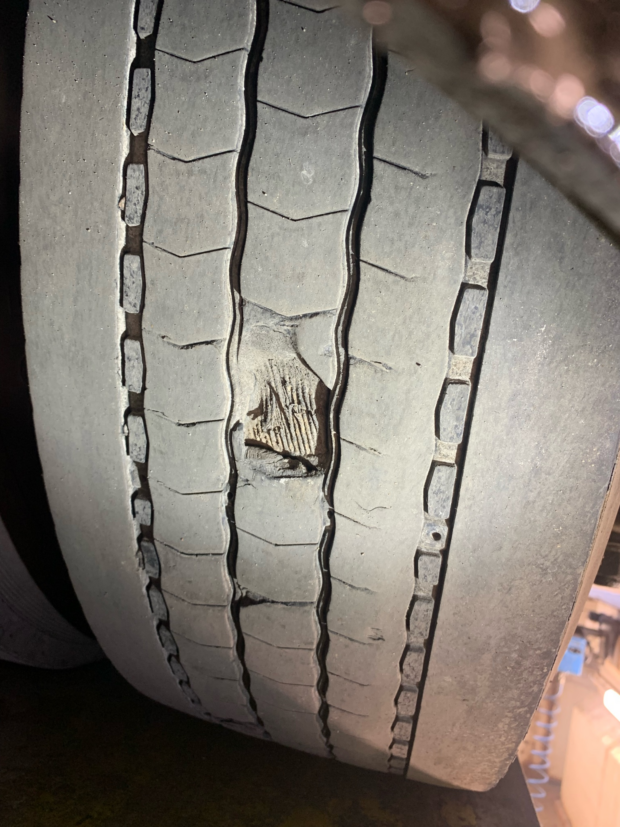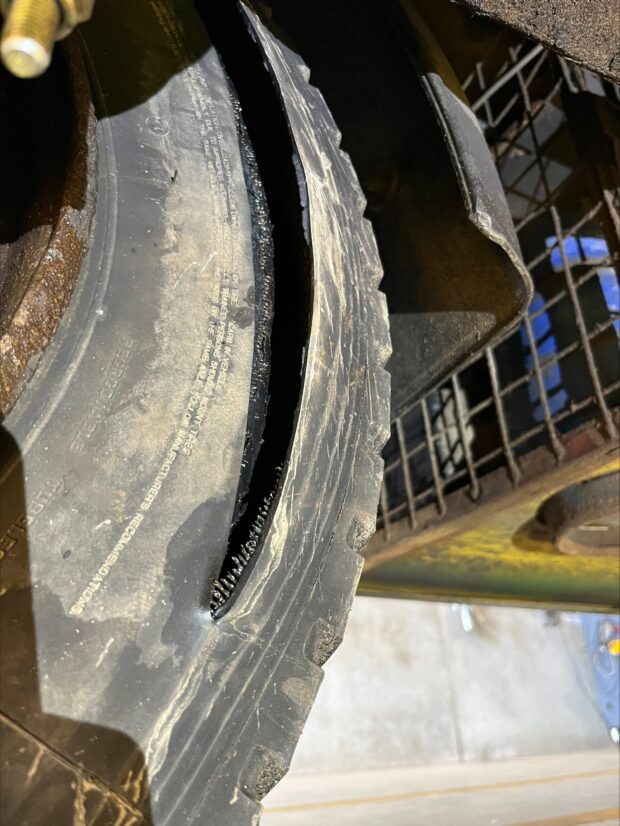Organisations: Driver and Vehicle
Standards Agency, Traffic Commissioners for
Great Britain
Why you should never get tired of hearing about good
tyre management
Posted by:Steve Cope
In the last few years, there’s been a lot of focus on tyres
fitted to heavy vehicles.
The biggest story was the ban on 10 year old tyres, which the
government introduced in 2021.
But more recently, we’ve shared advice on buying part worn
tyres and told you about the upcoming changes for free
rolling tyres at annual test.
From 1 April 2023, free rolling tyres fitted to front steering
axles will be treated as a major failure at annual test.
So with just a few weeks to go before this happens, it’s a good
time to revisit our tyre management guidance – and share with you
some of the worst examples we’ve seen during the annual test.
Getting it right
Making sure your tyres are properly fitted and legal is essential
to ensuring both that your vehicles are safe, and you don’t fall
foul of the rules.
Our guide to maintaining
roadworthiness offers more detail on what a good tyre
management system looks like. It’s a vital read for every
operator, transport manager, maintenance provider and driver.
Some of the key checks that form part of the system are tyre:
- suitability to vehicle and operating conditions
- age recording and monitoring
- defect recording on all safety inspections
- pressure monitoring and recording on safety inspection
reports
- inspection for damage and wear
It’s important to ensure staff dealing with tyre management are
properly trained and have the authority to make decisions.
Technicians should also be properly trained and qualified and
drivers should be properly trained and equipped to recognise and
report tyre issues.
Where it goes wrong
Tyre issues remain way too high on the list of most common
vehicle defects picked up at the annual test. Poor tyre
management can also lead to prohibitions at the roadside. You can
read our guidance on tyre defects
and tyre damage.
During the MOT, our testers check the tread and the condition of
a vehicle’s tyres.
But they also make sure that in-service tyres are appropriate for
the vehicle and positions which they are fitted to.
We wanted to share a few examples of what happens when the tyre
management system fails – or in some cases, clearly doesn’t exist
at all!

The picture above shows a tyre on a vehicle which was brought in
for its annual test earlier this year. A central tread block has
come off, exposing the cords which are now broken.

Shockingly, this is another tyre we found at annual test. It’s
clear evidence of the vehicle not being prepared for its MOT and
a maintenance regime which has failed to keep the vehicle
roadworthy. You could almost fit your lunchbox in that sidewall
hole!
For our last example, we’ve got a tyre which was recut to extend
its use. However, the vehicle standards assessor noticed they had
gone too far and exposed the cords. By doing this, the tyre was
rendered completely useless.
A good tyre management system would have prevented all of these
from being out on the road with tyre defects. Tyre inspections
and defect recording would have identified that the tyres were
wholly unsuitable and needed to be replaced before any further
use.
Free-rolling tyres at annual test
A tyre marked with ‘FRT’ on the side wall is a Free Rolling Tyre.
This means the tyre is designed for use on axles of a motor
vehicle and trailer axles. They are not designed for use on front
steering and drive axles.
From 1 April 2023, FRTs fitted to front steering axles will be
categorised as a major defect at annual test, which means a
failure.
We will publish updated HGV and PSV inspection manuals to reflect
this change.


